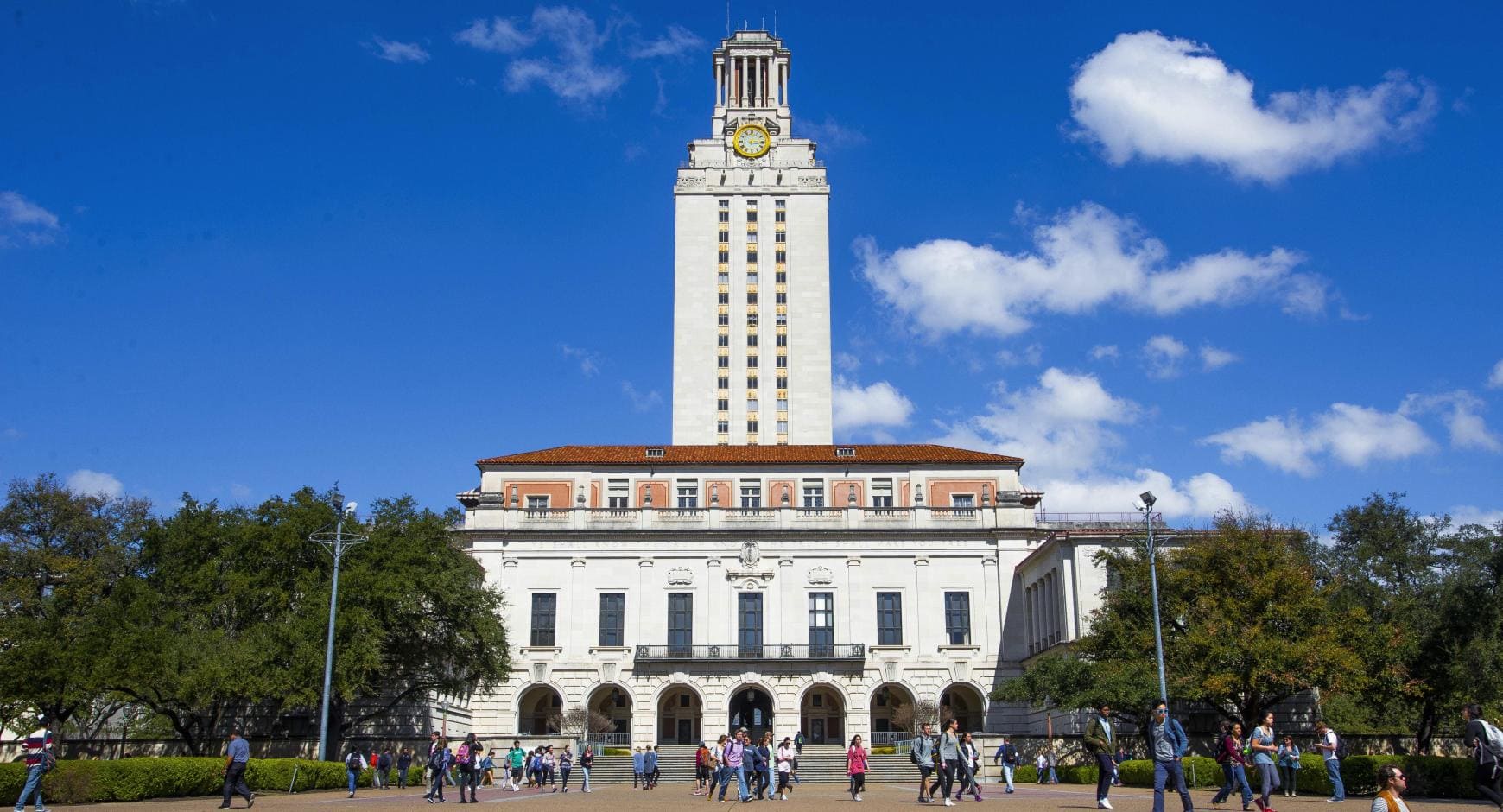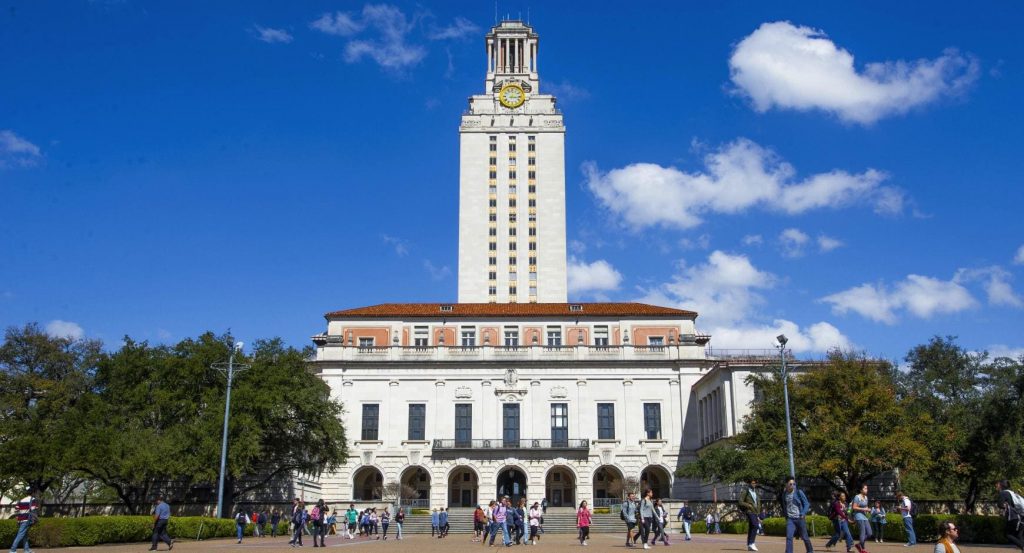Table of Contents
ToggleThe University of Texas acceptance rate is a critical statistic that potential students should be aware of before applying. As of the latest available data, the acceptance rate at the University of Texas is 32 %, meaning that out of every 100 applicants, only 32 are admitted. Knowing this rate is essential because it can help students assess their chances of being accepted and plan accordingly.
For students who are considering applying to the University of Texas, understanding the acceptance rate can be vital in making informed decisions about their college applications. It is important to note that the acceptance rate is not the only factor to consider when applying to colleges, but it can provide insight into the level of competition and the standards of the university.
The University of Texas is a public research university located in Austin, Texas, and it is one of the largest universities in the United States. It offers over 170 undergraduate degree programmes and has a diverse student body of over 50,000 students. The university is known for its academic excellence, innovative research, and strong athletic programmes. With a University of Texas acceptance rate of around 32 %, competition for admission is high, but students who are admitted have the opportunity to receive an excellent education and become part of a vibrant community.
Current UT Acceptance Rate
Currently, 32% of applicants are accepted by the University of Texas. This means that just 32 out of every 100 applicants receive an admissions offer. Although it might appear to have a low acceptance rate, it’s important to remember that UT is a highly selective institution that receives a lot of applications each year. In fact, the number of applications received by UT has been steadily increasing over the past few years, which has contributed to the lower acceptance rate.
When compared to historical rates, the current UT acceptance rate is lower than it has been in the past. For example, just a decade ago, the acceptance rate was around 40%, which means that more students were offered admission. However, as the university’s reputation has grown and the number of applicants has increased, the acceptance rate has become more competitive.
Several factors contribute to the current UT acceptance rate. One of the most significant factors is the high number of applicants that apply to the university each year. UT is a highly-regarded institution with a wide range of academic programmes, which attracts a large pool of highly qualified candidates. Additionally, UT has limited enrollment capacity, which means that it can only accept a certain number of students each year. This results in a highly selective admissions process, with a focus on admitting students who have demonstrated academic excellence and a strong commitment to their chosen field of study.
Understanding The Admissions Process At UT
The admissions process at UT is holistic, meaning that multiple factors are considered when evaluating an applicant. These factors include academic performance, test scores, extracurricular activities, leadership experience, and community involvement. The admissions committee looks for students who are not only academically strong but also well-rounded individuals who will contribute to the university community.
In terms of requirements for admission to UT, applicants must have a strong academic background. This includes taking challenging courses in high school, earning high grades, and achieving competitive test scores on either the SAT or ACT. In addition to these academic requirements, UT also considers other factors such as essays, letters of recommendation, and leadership experience. It’s important for applicants to submit a well-rounded application that showcases their strengths and achievements.
| Test | Score [UG] | Score [PG] |
| GPA | 2.0 [73-76%] | 3.0 [83-86%] |
| TOEFL | 76 | 76 |
| IELTS | 6.5 | 6.5 |
| Standardised Exam Score | Minimum 1070 (combined critical reading and math) or 480 on EBRW and 530 on Math | GMAT Min. 560 | GMAT Average 706 |
When it comes to factors that are considered in the admissions process, academic performance is a key consideration. However, UT also values diversity and seeks to admit students from a wide range of backgrounds and experiences. This means that factors such as race, ethnicity, and socioeconomic status may also be considered. Additionally, UT is committed to admitting students who have overcome adversity or faced challenges in their lives.
To increase their chances of being admitted, applicants should focus on their academic performance, as well as their extracurricular activities, leadership experience, and community involvement. By submitting a well-rounded application that showcases their strengths and achievements, applicants can stand out in the highly selective admissions process at UT.
Factors That Impact UT Acceptance Rate
Several factors influence the acceptance rate, and understanding these factors can shed light on the admissions process.
One significant factor that influences the University of Texas acceptance rate is academic performance. Applicants who have a strong academic record with high GPAs and standardised test scores are more likely to be admitted. Additionally, extracurricular activities and leadership roles can also play a role in the admissions decision.
Another factor that impacts the University of Texas acceptance rate is the competitiveness of the applicant pool. As the reputation of the University of Texas continues to grow, more and more students apply each year, making the admissions process increasingly selective. In recent years, the number of applicants has increased significantly, leading to a decrease in the acceptance rate.
Your University Of Texas Story Starts Here!
Get the insider edge for your application from our experts.
While academic performance and competitiveness of the applicant pool are significant factors in the admissions decision, the University of Texas also takes other factors into account. For example, the admissions committee considers an applicant’s personal background, socioeconomic status, and other factors that may have impacted their academic performance.
External factors can also impact the University of Texas acceptance rate. Demographic changes, for instance, can influence the composition of the applicant pool, leading to changes in the acceptance rate. Additionally, economic factors can also impact the admissions process, as changes in the economy can impact the number and quality of applicants.
Overall, the University of Texas acceptance rate is influenced by a range of factors, both internal and external. While academic performance and competitiveness are significant factors, the admissions committee also considers other factors to ensure that the student body is diverse and representative. As the University of Texas continues to grow in reputation and popularity, the admissions process is likely to become even more selective, making it even more challenging for students to gain admission to this esteemed institution.
Tips For Applying To UT
Here are some tips to help you prepare for and increase your chances of admission.
A. Advice on how to prepare for and apply to UT
- Research the university: Before applying to UT, it’s important to understand the university’s values, culture, and academic programmes. Familiarise yourself with the school’s mission, faculty, and extracurricular activities to gain a better understanding of whether the university is a good fit for you.
- Start early: UT has a rolling admissions process, which means that the earlier you apply, the better your chances of admission. Start preparing for the application process early and be mindful of deadlines to avoid any last-minute stress.
- Write a compelling essay: The essay is an important part of the UT application, and a well-written essay can make all the difference in the admissions process. Make sure to convey your personality, experiences, and goals in a clear and concise manner.
B. Discussion of strategies for increasing chances of admission
- Focus on your strengths: UT seeks well-rounded applicants who excel in academics, extracurricular activities, and community service. Highlight your strengths in these areas and demonstrate how they align with the university’s values and culture.
- Demonstrate leadership: UT values students who demonstrate leadership qualities, so try to take on leadership roles in your school or community. This can be in the form of a club officer, team captain, or volunteer coordinator.
- Seek letters of recommendation: Strong letters of recommendation can make a big impact on your application. Choose recommenders who know you well and can speak to your strengths and potential as a student.
C. Explanation of how to address weaknesses in an application
- Improve your grades: If your grades are lower than you would like, focus on improving them. Take challenging courses and seek extra help from teachers or tutors if needed.
- Highlight your growth: If you have experienced challenges or setbacks in your academic or personal life, don’t shy away from discussing them in your application. Use these experiences to showcase your resilience, adaptability, and growth.
- Pursue relevant experiences: If you have weaknesses in a certain area, such as community service or extracurricular activities, try to pursue experiences that can help you develop these skills. For example, you can volunteer for a local organisation or join a club related to your interests.
Conclusion
The University of Texas acceptance rate is a critical factor for prospective students who want to get admitted to this prestigious institution. Throughout history, the university has maintained a competitive admission process, with acceptance rates varying from year to year. As of now, the current acceptance rate of the University of Texas is 32%, which means that the admission process is still challenging.
The acceptance rate has been historically competitive, and the current rate remains a reflection of the institution’s high academic standards. For prospective applicants, it is crucial to understand the significance of their application and ensure that they meet the admission requirements. It is recommended that applicants submit their applications early, take standardised tests seriously, and write a compelling personal statement that showcases their unique strengths.
If you are a prospective applicant to the University of Texas, we urge you to take advantage of the resources available to you, such as the admissions office and academic advisors. With proper preparation and determination, you can increase your chances of getting accepted to the University of Texas and achieve your academic goals.
FAQs
- What is the current acceptance rate of the University of Texas?
The current acceptance rate of the University of Texas is 32%.
- How does the University of Texas acceptance rate compare to other universities?
The University of Texas acceptance rate is considered competitive compared to other universities. However, it is important to note that acceptance rates vary depending on the programme and academic level.
- What factors affect the University of Texas acceptance rate?
Several factors can affect the acceptance rate, such as the number of applications received, the academic qualifications of applicants, and the availability of spots in a particular programme.
- Is the University of Texas acceptance rate the same for all academic programmes?
No, UT’s acceptance rate can vary depending on the academic programme. Some programmes may have higher or lower acceptance rates than the overall university acceptance rate.
- Can I improve my chances of being accepted to the University of Texas?
Yes, there are several ways to improve your chances of being accepted to the University of Texas. Some of these include having strong academic credentials, taking standardised tests seriously, submitting a compelling personal statement, and demonstrating leadership potential and community service. It is also recommended to apply early and take advantage of the resources available to you, such as the admissions office and academic advisors.
PS: If there’s anything more you’d like us to know about, add it to the comments section!
We hope you enjoyed reading this blog on ‘University Of Texas Acceptance Rate For International Students’. Do check out our other blogs –


















1 thought on “Top PGDM Courses In Canada: Universities & Eligibility”
I have done Bachelor’s in Culinary Arts from India and completed my graduation in the year 2022 .I am 22 years old. After graduation, I have done 1 year paid internship from USA .Now, I would like to take occupational experience and learn culinary skills and also do masters in Culinary arts.How can I find the college n best course / country where I can persue studying further